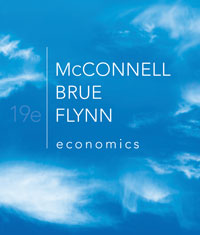1 A) the voting paradox B) adverse selection C) limited and bundled choices D) pork-barrel politics 2 A) depend on which pair of alternatives is voted on first B) be the largest park C) be the smallest park D) be the moderate size park 3 A) Immediate costs and benefits B) Delayed costs and benefits C) Immediate benefits and delayed costs D) Delayed benefits and immediate costs 4 A) adverse selection B) the median voter model C) political logrolling D) government failure 5 A) An employer requires all employees to participate in its company-subsidized health insurance plan B) The government subsidizes the use of recycled inputs C) The government imposes a tax on tailpipe emissions for automobiles D) An employer monitors her workers to ensure they are not shirking 6 A) the voting paradox leads to too little public output B) special interests work to assure the passage of projects whose costs exceed their benefits C) public sector workers have less training than their private sector counterparts D) competitive pressures of the market are largely absent 7 A) owner–stockholder B) stockholder–manager C) hourly worker–salaried employee D) bond holder–stockholder 8 A) monopoly profits provide sufficient resources to cover the cost B) workers are constrained from readily changing jobs C) wages are inflexible D) markets are competitive and workers are informed of safety risks 9 A) Kevin, who knows his new car is a lemon, attempts to sell it to an unsuspecting buyer B) Given the choice of better family medical coverage or increased paid time away in the company's benefits program, Kelsey selects the former C) After buying the extended coverage on her rental car agreement, Melissa drives more recklessly than she would in her own car D) David watches his favorite shows on public television, but never contributes to their pledge drives 10 A) pass this project and resources will be allocated efficiently B) pass this project and resources will be overallocated to the project C) defeat this project and resources will be allocated efficiently D) defeat this project and resources will be underallocated to the project





